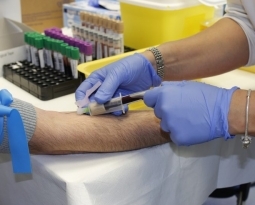Michigan Patent of the Month – April 2021
Automated driving is coming to life fast, using cameras and sensors to try and provide a failsafe algorithm to direct movements.Plenty of technology that is developed for aiding and assisting human drivers will contribute to self-driving in the future. Developing effective and accurate computer vision will be critical to this transition. Magna Electronics, Inc. has been working on developing the technology that will direct these self-driving cars in a sustainable and safe way. They have recently been working on a vision system that can determine true negatives and avoid false negatives and positives for safe conditions using a failsafe algorithm.
The cameras detect objects that are nearby or in the predicted path of the vehicle, especially for use in reverse driving. The system is equipped with a failsafe algorithm that aims to evaluate and ensure the machine vision is at it’s best conditions. This means the vehicle has to meet certain standards to be deemed safe – for instance, all doors and trunk should be closed, ignition in the right position, and mirrors unfolded (if needed). The failsafe algorithm helps to reduce the conditions that might negatively impact the machine vision, such as your door being open and blocking the camera view. In the case of blockages (e.g. mud, snow, rain) the failsafe indicates a partial or full blockage. The same goes for if the cameras need recalibration or receive damage. These blockages or errors are measured on a 5 part scale with meaning no blockage, and 5 meaning fully blocked. This scale helps the system separate true positives from false positives and false negatives. The system tracks the frequency of these error indications and uses this information to determine if the issue is real or falsely reported. When a true positive is detected, an alert is sent to the driver, highlighting the blockage to enhance driver awareness.
Are you developing new software for an existing application? Did you know your development work could be eligible for the R&D Tax Credit and you can receive up to 14% back on your expenses? Even if your development isn’t successful your work may still qualify for R&D credits (i.e. you don’t need to have a patent to qualify). To find out more, please contact a Swanson Reed R&D Specialist today or check out our free online eligibility test.
Who We Are:
Swanson Reed is one of the U.S.’ largest Specialist R&D tax advisory firms. We manage all facets of the R&D tax credit program, from claim preparation and audit compliance to claim disputes.
Swanson Reed regularly hosts free webinars and provides free IRS CE and CPE credits for CPAs. For more information please visit us at www.swansonreed.com/webinars or contact your usual Swanson Reed representative.

















